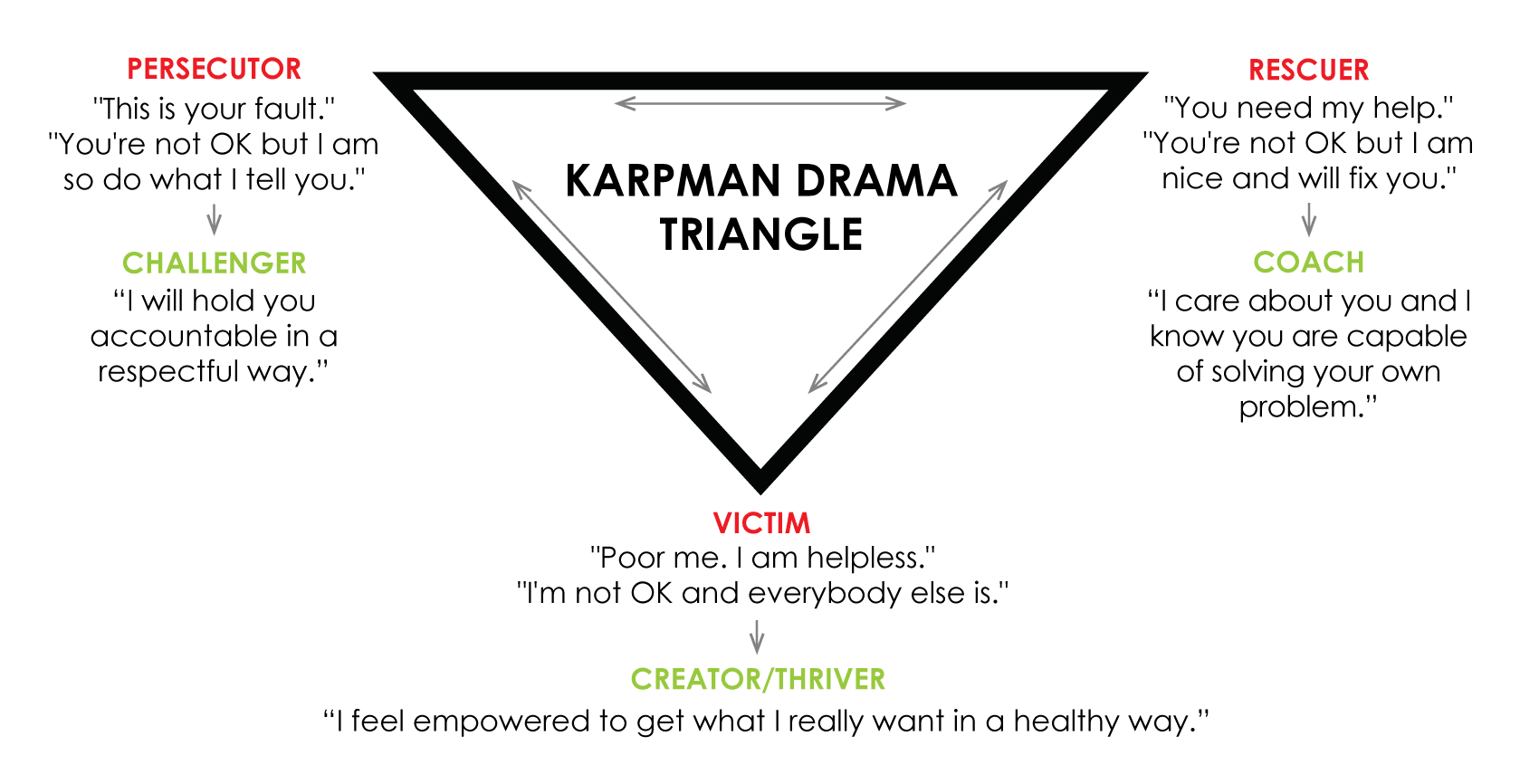Workplace Conflict – How to Manage Employee Drama through a New Lense

Is your bottom line affected by workplace conflict and managing employee drama? Harvard Business Review published a RHR study that showed poor performing executive teams decrease employee engagement scores by 42%! A task management software company published estimates that office workers spend more than two and a half hours per week trying to resolve conflict, which translates into $359 billion in losses for U.S. companies every year. How much is workplace conflict and employee drama costing you? The more you understand the roots of drama, the better you can lead your team.
Recently I worked with two executives who were having interpersonal challenges getting along. Both participated in independent coaching sessions with me, and both would complain about the other person from their own perspective. Eventually I facilitated a direct conversation between the two, to help each identify the root of their tension openly and directly. Through that interaction it became clear to both executives that they were seeing the situation through a distorted lens. In fact, the current dynamic wasn’t really about each other, it was rooted in past painful experiences that were old baggage for each.
In Eckhart Tolle’s book A New Earth, Awakening to Your Life’s Purpose, he describes a person’s old baggage as their “pain-body”. We all have one, the automatic lens we see the world through based on our own childhood and adult experiences of pain. Our mind is conditioned to see and think by our past. If this lens is unconscious it forces us to reenact the past again and again. If this lens becomes conscious, it allows us to take a step back and examine our interactions like a detective, looking for “truth” vs our own version of “truth”.
Tolle describes how our pain-body is an energy force inside us, thriving on new negative experiences to give it energy to survive and validate its existence. That’s why we see people complain about someone but unconsciously put themselves back into similar situations that will validate that their pain-body is correct. If a pain-body goes un-feed for too long, it will awaken and seek out drama to repeat the cycle. The pain-body needs to feed on drama to survive.
Tolle explains how a person’s pain-body will attempt to provoke others around them because it needs to be fed. This is called “pushing someone’s buttons” unconsciously knowing the weakest most vulnerable parts of another person and attempting to provoke them into a reaction. During coaching, the executives mentioned earlier openly discussed they were on a “cycle” of drama and fighting. These two individuals had complementary pain-bodies, each person needing the other to validate their pain-body’s existence. This can be seen in the classic Karpman Drama Triangle (victim/persecutor/rescuer) described brilliantly in the book The Power of Ted by David Emerald. Metaphorically speaking, a persecutor needs to find a victim, and a victim needs to find a persecutor. This way, both can feed off each other, both validating the existence of their pain-body. That is why we often see these cycles unconsciously played out in family systems and carry on generationally.
If someone steps out of this dynamic the individual left will begin to unconsciously seek out a replacement who can validate their pain-body and continue to feed it. If the new individual doesn’t react and doesn’t give them the emotional drama they need to validate themselves, this can cause them to unconsciously get angry at the person, not because of what the person did, but in fact, because of what the person didn’t do.
Tolle states, “She believed I had “done something” to her, but I had done nothing. Instead of asking what I had done to her, perhaps she should have asked what I had not done. I had not reacted, not confirmed the reality of her story, not fed her mind with more thought and the pain-body with more emotion. I had allowed her to experience whatever she was experiencing at the moment, and the power of allowing lies in non-interference, non-doing.”
As coaches, we teach business leaders how to see workplace conflict through the lens of the drama triangle. That drama is really rooted in employee’s distorted beliefs, their past painful experiences, and their long-held patterns of behavior. Leaders can learn skills in not only improving their own self-awareness, but also how to support an employee’s self-awareness so a company can decrease negativity and drama in the workplace, thereby improving interpersonal communication and collaboration.
The goal is for persecutors to stop blaming others and become better at seeing the role they played in a situation; victims can become empowered to seek their own solutions and not feel helpless; and rescuers can see they get an ego boost when they come to the rescue and try to solve other people’s problems.
As a leader, if you want to learn more about how to coach your employees during workplace conflict, read The Master Coach by Gregg Thompson or The Power of Ted by David Emerald. I also list some coaching tips in my blog “Six Fundamentals to Adopt a Coaching Mindset”.






